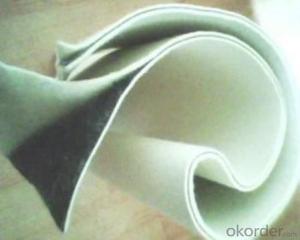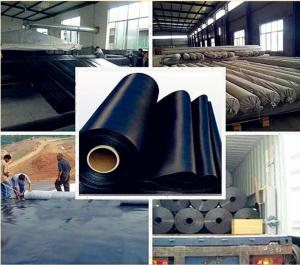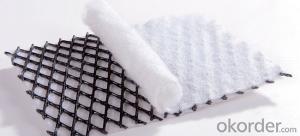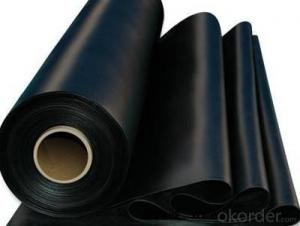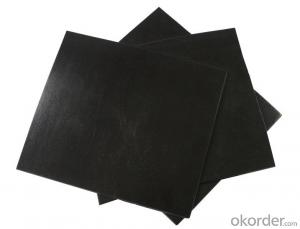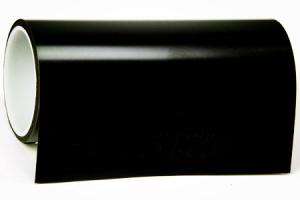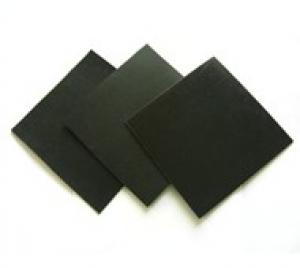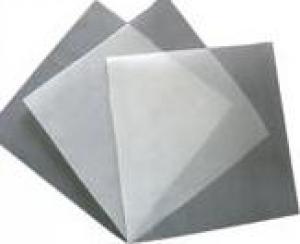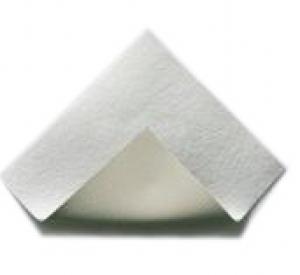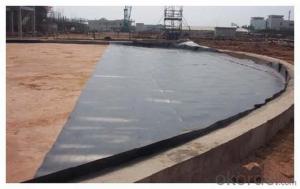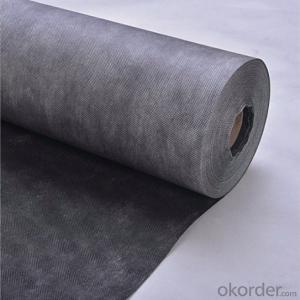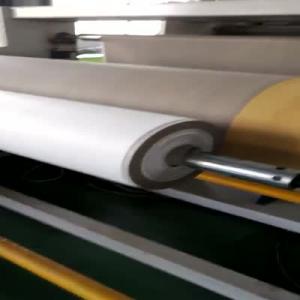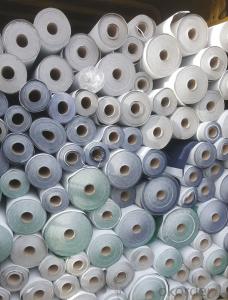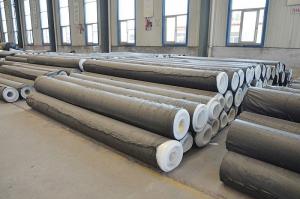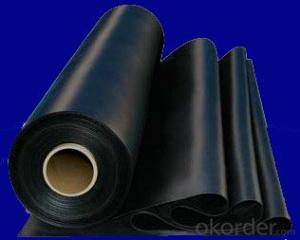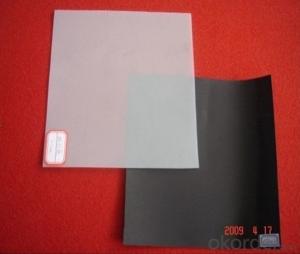geomembrane for Landfill to Prevent the Waste Water
- Loading Port:
- Qingdao
- Payment Terms:
- TT OR LC
- Min Order Qty:
- 5000 m²
- Supply Capability:
- 500000 m²/month
OKorder Service Pledge
OKorder Financial Service
You Might Also Like
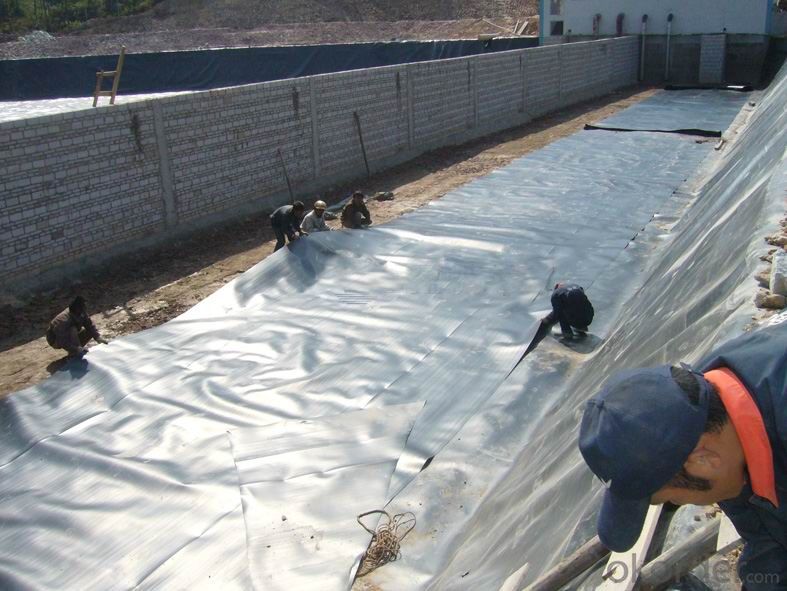

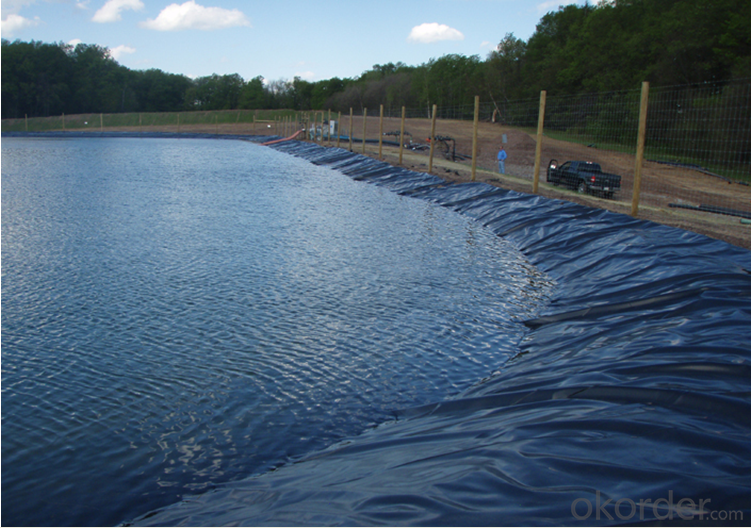
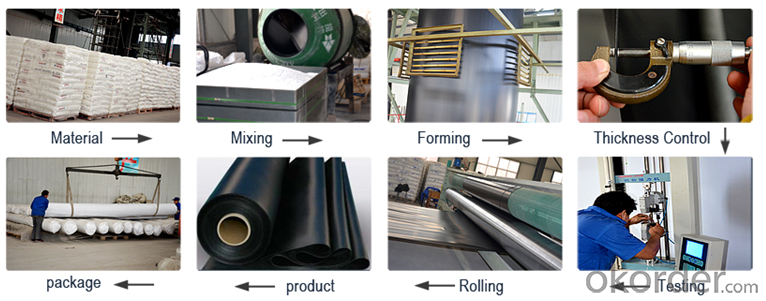
One Side Textured Hdpe geomembrane Specification :
More detailed products pls contact me.
HDPE geomembrane specifications(USA GRI-GM17 Standards)
No. | Item | Value | ||||||
0.75mm | 1.00mm | 1.25mm | 1.50mm | 2.00mm | 2.50mm | 3.00mm | ||
1 | Density (g/cm3) | 0.939 | ||||||
2 | Yield strength (N/mm) | 11 | 15 | 18 | 22 | 29 | 37 | 44 |
Break strength (N/mm) | 20 | 27 | 33 | 40 | 53 | 67 | 80 | |
Yield elongation/% | 12 | |||||||
Break elongation/% | ≥450 | |||||||
3 | Tear resistance/N | 93 | 125 | 156 | 187 | 249 | 311 | 374 |
4 | Puncture resistance/N | 240 | 320 | 400 | 480 | 640 | 800 | 960 |
5 | Stress crack resistance/h | ≥1500 | ||||||
6 | Carbon black content/% | 2.0-3.0 | ||||||
Carbon black dispersion | Carbon black dispersion(only near spherical agglomerates) for 10 different views 9 in categories 1 or 2 and 1 in category 3 | |||||||
7 | Oxidative induction time/min | Standard OIT≥100 High pressure OIT≥400 | ||||||
8 | Oven aging at 85°C | |||||||
Standard OIT-% retained after 90days | 55 | |||||||
High pressure OIT-% retained after 90days | 80 | |||||||
9 | UV Resistance
| |||||||
Standard OIT retained after 1600hrs | 50 | |||||||
High pressure OIT retained after 1600hrs | 50 | |||||||
10 | -70°C Low temperature impact brittle property | Pass | ||||||
11 | Permeability g•cm(cm2)•pa | ≤1.0× | ||||||
12 | Dimensional stability/% | ±2 | ||||||
FAQ:
1. How about the delivery time?
Two weeks upon receipt of down payment.
2. What kind of payments do we accepted?
T/T, L/C, WesternUnion, MoneyGram.
3. What's are the MOQ?
Normally the MOQ is 5000 SQM in theory.
And we can provide you free samples for quality inspection.
4. Do you charge for the samples?
Accordeing to our company policy, the samples are freee, we only charge the freight fee. And we will return the freight fee in your second order.
5. Can you produce the product according to customers' requirements?
Sure, we are professional manufacturer, OEM and ODM are both welcome
- Q:What is the expected lifespan of a geomembrane in a canal lining application?
- The expected lifespan of a geomembrane in a canal lining application can vary depending on several factors such as the type and quality of the geomembrane material, installation techniques, environmental conditions, and maintenance practices. However, with proper installation and regular maintenance, a well-designed geomembrane in a canal lining application can have a lifespan of 20 to 30 years or even more.
- Q:How do geomembranes provide water retention in rooftop gardens?
- Geomembranes provide water retention in rooftop gardens by acting as a barrier that prevents water from escaping through the roof structure. These waterproof membranes are installed beneath the garden soil, effectively sealing off the rooftop and creating a closed system. By preventing water from seeping out, geomembranes help to retain moisture within the garden, ensuring that plants have a constant supply of water even during dry periods.
- Q:What are the considerations for geomembrane installations in areas with high groundwater salinity?
- When installing geomembranes in areas with high groundwater salinity, there are several important considerations to keep in mind. Firstly, the choice of geomembrane material should be carefully selected to ensure it is compatible with the salinity levels. Some geomembranes may be more resistant to corrosion and degradation caused by saline water. Secondly, proper site preparation is crucial to minimize the risk of punctures or tears in the geomembrane. Conducting a thorough geotechnical investigation to assess the soil conditions and groundwater salinity levels can help in determining the appropriate measures to be taken during installation. Furthermore, it is important to establish an effective drainage system to prevent the accumulation of saline water beneath the geomembrane. This can involve using geotextiles or geocomposites to facilitate water movement and reduce the risk of hydrostatic pressure buildup. Regular monitoring and maintenance are also vital to ensure the integrity of the geomembrane over time. Regular inspections should be conducted to identify any potential issues such as leaks or degradation, and appropriate remedial actions should be taken promptly. Overall, careful material selection, proper site preparation, effective drainage, and regular monitoring are key considerations for geomembrane installations in areas with high groundwater salinity.
- Q:What is the floor finishing protective film?
- The floor finishing protective film is made by the adherence of 24mm PVC and knitting cotton. PVC can effectively keep out the liquid and dust. Knitting cotton can prevent the floor from scratching and can act as a buffer when something heavy falls on the floor. So it can effectively protect the floor tile, the marble and so on.
- Q:How do geomembranes contribute to groundwater remediation projects?
- Geomembranes contribute to groundwater remediation projects by acting as a barrier between contaminated groundwater and the surrounding environment. They are used to contain and control the movement of contaminated water, preventing it from spreading further and causing additional pollution. Additionally, geomembranes can be used in conjunction with other remediation techniques, such as groundwater pumping and treatment, to effectively isolate and treat contaminated areas, reducing the risk of groundwater contamination and protecting the ecosystem.
- Q:Who need the national standards of geomembrane?
- Ha ha, service of manager Zhang is perfect.
- Q:How to measure the loss of geomembrane joints and related specifications?
- In general, the construction of the geotechnical membrane is mainly by welding, and the lap?width is confined to the requirements of the specification. According to the requirements of "the lap width of the sanitary landfill field seepage systems engineering and technical specifications CJJ113-2007 ", lap?width of geomembrane: sweat soldering: 100±20(mm) squeezing welding 75±20(mm). According to our factory's experience, in general, the overlap loss of the geomembrane is between the 5%-8%, that is, for each1000 square meters of geomembrane, the loss is 80 square meters to 50 square meters. Construction site whose environment is relatively simple can calculate the loss according to 5%, complex construction site can calculate the loss according to 8%.
- Q:What are the requirements for geomembranes used in biogas plants?
- Geomembranes used in biogas plants must meet specific requirements to ensure their effectiveness. Firstly, they need to have excellent chemical resistance to withstand the corrosive gases produced during biogas production. They should also have high puncture resistance to prevent leaks and maintain the integrity of the gas storage system. Additionally, geomembranes used in biogas plants should have high tensile strength to withstand the stresses and strains associated with gas storage and movement. UV resistance is also crucial to ensure the geomembrane's longevity, as biogas plants are often exposed to sunlight. Lastly, these geomembranes should be flexible and easy to install, allowing for efficient construction and maintenance of the biogas plant.
- Q:Can geomembranes be customized for specific projects?
- Yes, geomembranes can be customized for specific projects. They can be tailored to meet specific size, shape, and material requirements, ensuring they are suitable for the specific conditions and needs of the project. This customization allows for optimal performance and longevity of the geomembrane in various applications such as landfill liners, mining containment, and water storage.
- Q:What is the difference between HDPE geomembrane and LDPE geomembrane?
- LDPE is softer. HDPE is high density polyethylene while LDPE is low density polyethylene. HDPE is harder while LDPE is softer. And LLDPE, also known as linear low density polyethylene, is much softer. HDPE and LLDPE can be used as manufacturing materials of impermeable geomembrane.
1. Manufacturer Overview |
|
|---|---|
| Location | |
| Year Established | |
| Annual Output Value | |
| Main Markets | |
| Company Certifications | |
2. Manufacturer Certificates |
|
|---|---|
| a) Certification Name | |
| Range | |
| Reference | |
| Validity Period | |
3. Manufacturer Capability |
|
|---|---|
| a)Trade Capacity | |
| Nearest Port | |
| Export Percentage | |
| No.of Employees in Trade Department | |
| Language Spoken: | |
| b)Factory Information | |
| Factory Size: | |
| No. of Production Lines | |
| Contract Manufacturing | |
| Product Price Range | |
Send your message to us
geomembrane for Landfill to Prevent the Waste Water
- Loading Port:
- Qingdao
- Payment Terms:
- TT OR LC
- Min Order Qty:
- 5000 m²
- Supply Capability:
- 500000 m²/month
OKorder Service Pledge
OKorder Financial Service
Similar products
New products
Hot products
Hot Searches
Related keywords
